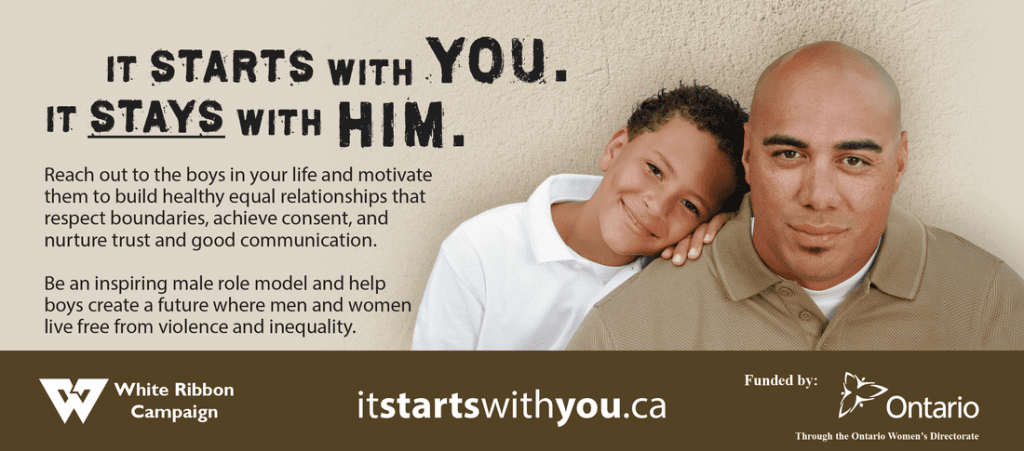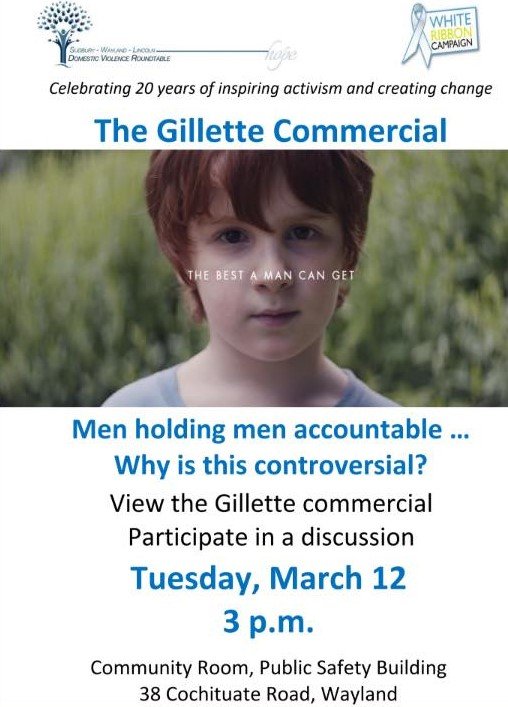By Allie Talarico
Where are the men?
In the wake of a devastating gender-based massacre that took place in Canada in 1989, women demanded an answer to this very question. Where are the men in the fight to end violence against women and girls? In response, The White Ribbon Campaign was created.

The White Ribbon Campaign is a pledge that asks men to “never commit, condone or remain silent about violence against women and girls”. Domestic and sexual violence is not a new issue. It impacts people in every town in every country across the world. It affects people regardless of gender or sexual orientation, but more historically it has been addressed in the scope of women: violence perpetrated against women, and violence perpetrated against women by men.
The White Ribbon Campaign works to rebrand the deeply embedded, toxic ideal of masculinity. Masculine culture “lets boys be boys” by condoning bullying, sexism, and assault, but White Ribbon does otherwise. The campaign embodies intersectionality by recognizing that gender-based violence also intersects with race, sexuality, class, religion, and age, and that female-identified, trans, and gender non-conforming people face increased risk of violence. The campaign demands men’s accountability and inclusivity, requiring them to “specifically acknowledge and challenge their power and privilege in subtle and explicit ways.”
Some of White Ribbon’s current projects include Neighbours, Friends & Families: Engaging Immigrant and Refugee Communities (NFF), and Draw-the-Line. NFF highlights the importance of intersectionality and remembering that domestic violence is not just a problem affecting White women and White people. Draw-the-Line teaches people to spot signs of sexual violence as well as trains people to safely intervene as bystanders. There is also #20minutes4change, a campaign that encourages fathers to talk to their sons about sexual consent, and White Ribbon’s PSA “Boys Don’t Cry”, which fights for the right of boys and men to express full ranges of emotion without backlash that they aren’t “man enough”.
The typical characteristics of masculinity, such as toughness, control, sexual prowess, and emotionlessness, are not sustainable. The brand Gillette, notable for its razors and its motto “The best a man can get”, made headlines for its controversial ad attacking toxic masculinity. Some of the public fought back saying that toxic masculinity doesn’t exist, which only reinforces the fact that it is a problem in our society.
The White Ribbon Campaign is not a cure-all for violence committed by men. It emphasizes that men can and should stop perpetuating violence against women, but this potentially leaves transgender and non-binary people out of the picture. It also must be taken into account that people will not change unless they want to. Some men, no matter how much they are educated or lectured, may refuse to hold themselves or their peers accountable for their contributions to violence. However, The White Ribbon Campaign brings men to the table and to the conversation in a way they were not before, and promises even more change, growth, and education that can help reduce gender-based violence.
If you are looking to get involved in domestic violence awareness or are interested in learning more about the White Ribbon Campaign, the Sudbury-Wayland-Lincoln Domestic Violence Roundtable will be holding a discussion and viewing event on Tuesday, March 12 at 3pm on the controversy behind the Gillette commercial “The Best Men Can Be”. You can also follow this link to read about Massachusetts’ own White Ribbon Day Campaign.





